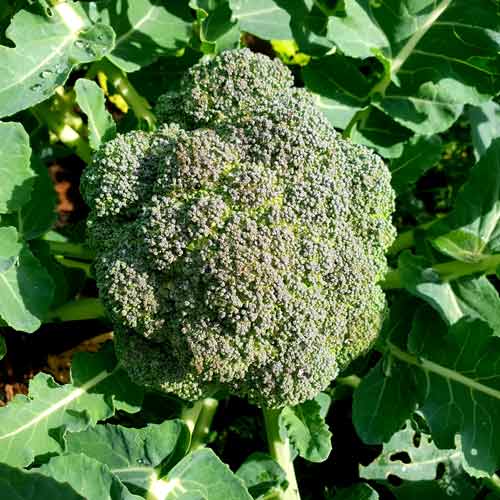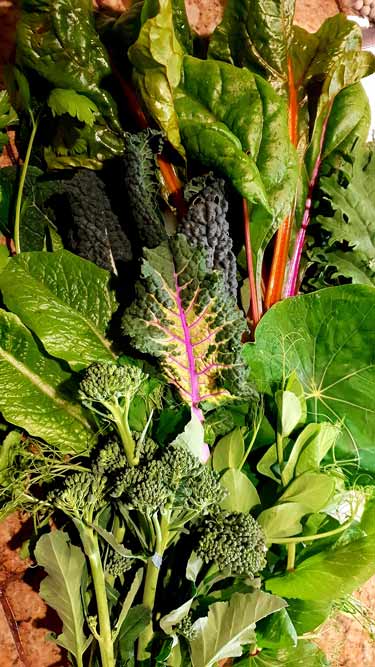June Planting Guide
Learn how to make the most of your June garden in this month's planting guide with expert horticulturist Sascha Andrusiak.
June, part of the season of Waring (April- July)
The mid year month of June is named by the Romans after the goddess of marriage, Juno. The 22nd of June (sometimes 21st or 23rd) marks the winter solstice in the southern hemisphere, otherwise known as Mid-Winter, Brumalia or Saturnalia. Whether in the norther hemisphere (Dec 22nd) or here in the south, the winter solstice heralds the time of the year with the least amount of daylight hours. It is a moment in time shrouded in ceremony, ritual, tradition and superstition across the world. A multitude of cultures both ancient and contemporary recognize its astrological and spiritual significance. Following the pagan wheel of the year, this is the time of Yule, a quarter day, celebrated by festivities and merriment around a large bonfire.
Here in the Kulin Nation, June is considered to be a part of the longest season in the Kulin calendar – Waring (or Wombat season). In this long cool season we experience long nights and short days. Rainfall is high, temperatures continue to drop and mornings are misty. The Lyrebirds continue their courtship dances and to care for their eggs. Fungi is abundant and the high rainfall this year has delivered reproductive structures the size of footballs!
 In our veggie gardens here in Melbourne, the month of June asks us to plant Asparagus crowns and cut back the yellow tops of established Asparagus crowns. Feed them with some well-rotted organic manure spread over the surface of the soil. Plant fat rhubarb crowns or divide your crowded crowns and replant. In your annual patch, your winter staples should be kicking along, but you can still pop in Brassicas – go for nice sturdy seedlings of Broccoli and Kale. Pop in some more lettuce and Asian greens to keep your regular supply rolling along. Poke in some broad beans, peas and snow peas. Sow a clump of three of spring onion and coriander.
In our veggie gardens here in Melbourne, the month of June asks us to plant Asparagus crowns and cut back the yellow tops of established Asparagus crowns. Feed them with some well-rotted organic manure spread over the surface of the soil. Plant fat rhubarb crowns or divide your crowded crowns and replant. In your annual patch, your winter staples should be kicking along, but you can still pop in Brassicas – go for nice sturdy seedlings of Broccoli and Kale. Pop in some more lettuce and Asian greens to keep your regular supply rolling along. Poke in some broad beans, peas and snow peas. Sow a clump of three of spring onion and coriander.
It’s still a great time to improve the organic content of your soils. Sow a green crop into one of your beds, choose a mixture of legumes, allow them to grow and then dig back into the soil well before the crop flowers.
Continue to monitor for cabbage white butterfly, picking and squishing the larvae, but you will notice the numbers falling away rapidly as the cold weather puts an end to their tyranny! Now it’s the snails that are really shining, so compete with them by going out at dusk and early evening with a torch. Pick them off your plants and dispose of them however you see fit. Continue to weed and mulch your garden.
Liquid feed your vegetables fortnightly with an organic liquid fertiliser and soil conditioner/fish emulsion.
Regularly harvest your plants veggies to add to stir fries, soups, salads and sandwiches. Regular harvesting keeps you close to your plants so you notice what needs to be done.
Whatever you do this month – you must stop and revel in the glorious sight of persimmon trees. Stop and admire their smooth bare branches, pregnant with baubles of luscious orange fruit.
 Plant Directly into prepared soil, seeds of:
Plant Directly into prepared soil, seeds of:
Asian greens, Broad Beans, Chives, Coriander, Lettuce, Mustard Greens, Pak Choy, Parsley, Peas, Snow peas, Radish, Rocket, Spinach, Dill.
Plant into seed trays or plant as seedlings:
Asian greens, Broccoli, Kale, Lettuce, Onion, Rocket. You can still sneak in the very last cloves of garlic but this is the ABSOLUTE latest you can push it in our neck of the woods!
Planty fact of the month:
Sadly, Nutrition doesn’t really factor into the crops that are mass produce for consumption. Industrial Growers tend to grow species that are fast to grow and highest in yield, generally at the sacrifice of nutritional content. So, go on, grow your own high nutrient, diverse crops in your back yard.
Sascha Andrusiak is a former Burnley student who has worked in technical, research and teaching roles over her 21 years at Burnley Campus. Her current role is Horticultural Services Officer. Look out for regular contributions from Sascha on the Science Alumni Newsroom.